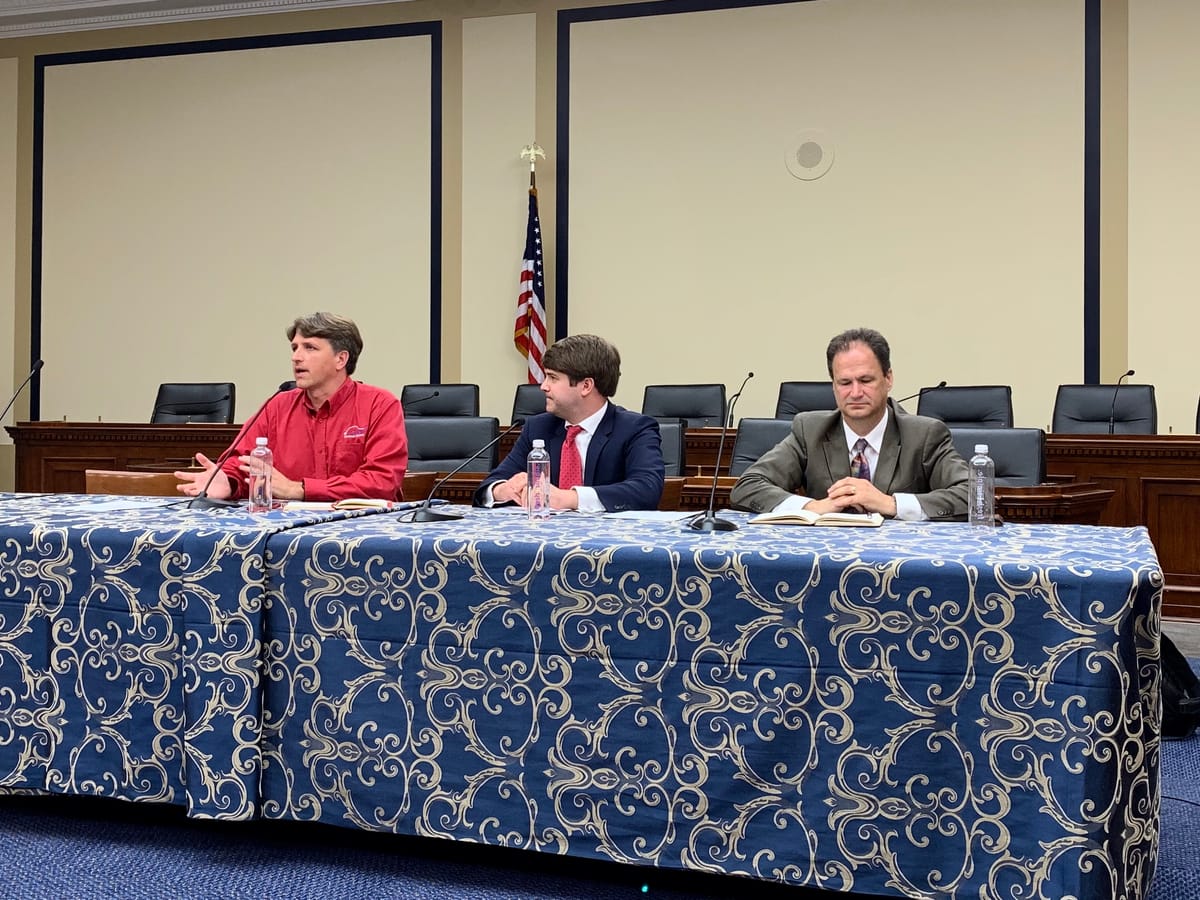Fixed Wireless Could Solve the Digital Divide, if Given the Chance
WASHINGTON, June 12, 2019 — Congress should make it easier for small wireless internet service providers to acquire spectrum and deploy broadband in rural areas, said speakers at a Wednesday panel hosted by the Wireless Internet Service Provider Association. Fixed wireless’ cost-effective deployment
Em McPhie

WASHINGTON, June 12, 2019 — Congress should make it easier for small wireless internet service providers to acquire spectrum and deploy broadband in rural areas, said speakers at a Wednesday panel hosted by the Wireless Internet Service Provider Association.
Fixed wireless’ cost-effective deployment has made it the most rapidly growing sector of the broadband industry, said panelists at a WISPA-Crown Castle event entitled “Rural Broadband: Solutions for America’s 21st Century Infrastructure Challenge.”
Rural wireless providers are able to make broadband deployment profitable, with advocates claiming a return on investment for broadband projects in just 10 months, versus 11 years for fiber deployment.
There are more than 2,000 providers across the United States using fixed wireless to serve more than four million rural customers, said WISPA President Claude Aiken. The majority of these are very small businesses, led by local entrepreneurs using private at-risk capital to bring broadband to rural communities without the help of a government subsidy.
Amplex Founder Mark Radabaugh said that this proves the inaccuracy of the “conventional wisdom” that rural broadband will only be deployed if the government is subsidizing it. He suggested that the government should treat spectrum in the same way that it used to treat land—give it out to whoever is willing to develop it.
Jimmy Carr, the president of All Points Broadband, pointed out that the digital divide is a “last mile” problem, and the optimal solutions will be specific to each geographic area. The three main challenges that WISPs are currently facing, he said, are spectrum limitations, difficulty acquiring additional spectrum, and policymaker bias for specific access technology.
Providers use predominantly unlicensed spectrum for the last mile, but the frequency bands currently being used are unable to penetrate obstructions. Non line-of-sight spectrum is critical for connecting rural America, Carr said.
The difficulty with acquiring additional spectrum stems from the current auction rules being stacked against rural, “last mile” providers. The licensing areas being auctioned off are extremely large, making only so that the major mobile carriers can compete.
Carr showed an example of one area where his company has all of the necessary demand and technology to deploy fixed wireless but cannot afford to secure the spectrum license for that area because it would also require buying the exclusive rights to that spectrum spanning multiple states.
Carr and the others also criticized the Federal Communications Commission’s auction processes as inefficient and impossible for small wireless internet providers to obtain needed spectrum for specific rural areas.
Policymakers tend to gravitate towards the call to bring fiber to every home, said Carr. He disagreed with this approach, saying that it was unlikely to happen in the near future, and the focus should instead be on getting basic service to as many Americans as possible at the lowest aggregate cost.
Rep. Rob Wittman, R-Va., said that fixed wireless is a “critical and central component” of bringing broadband access to rural areas, and the government should invest in it. He warned that not doing so would put the United States at a competitive disadvantage against other nations.
However, Wittman argued against the practice of giving residents of rural areas a stipend to pay for services and recommended instead offsetting the initial capital cost that wireless providers need to build out the systems. Reducing capital cost would create a “longer range business plan, and viability within that business plan going forward, Wittman said.
Carr agreed to this, reminding policymakers that delivering broadband is “subject to the laws of finance,” meaning that it will require significant upfront investment.
Wittman highlighted the need for “aggressive” practices in terms of speed, pointing out that the current minimum requirement for certain Agriculture Department deployments at 10 Megabits per second (Mbps) down /1 Mbps up is already proving too slow, especially for businesses.
He advocated for a 50 Mbps down/5 Mbps up speed standard, saying that this would ensure “quality and longevity of business.”
(Photo of panel by Emily McPhie.)










Member discussion